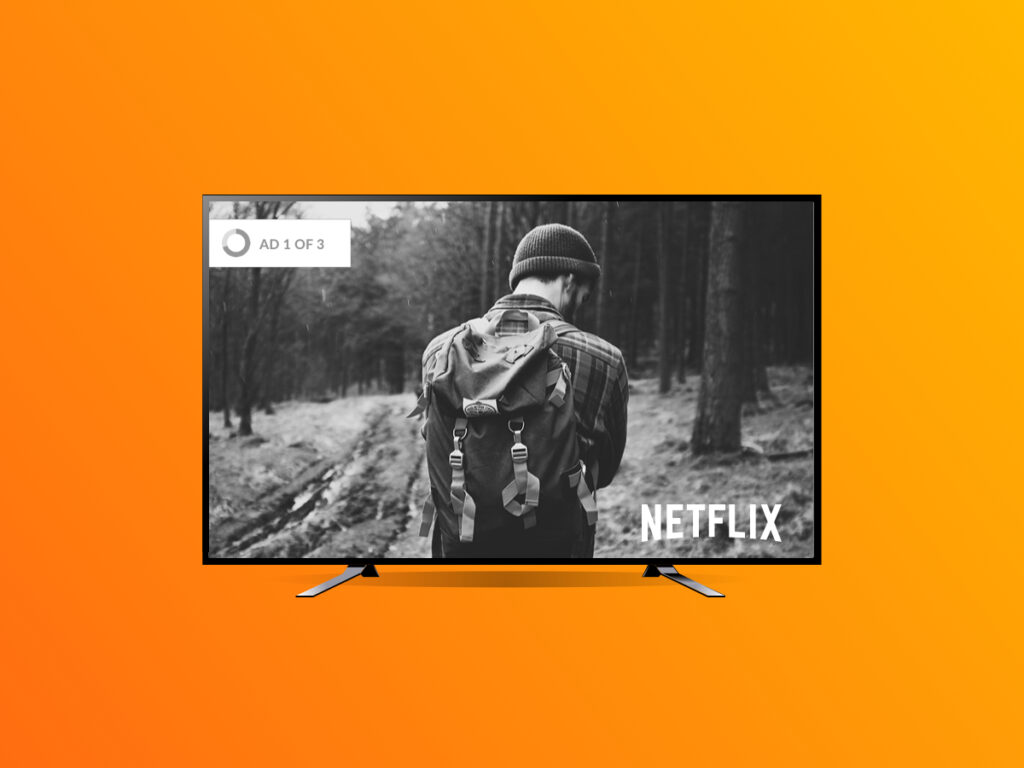Seeing Connected TV Through a Search Marketer Lens
by Jaci Schreckengost
3 Min Read
CES 2024: Stagwell (STGW) and MNTN Announce Partnership in Unified Performance SolutionsLearn More
As Netflix plans its ad-supported future, the industry waits with anticipation.

5 Min Read
On the day of the CNBC Stock Draft, Mark Douglas, MNTN’s Chief Executive Officer and Ryan Reynolds, MNTN’s Chief Creative Officer, otherwise known as Team MNTN Goat, were perfectly aligned. “My first pick is going to be Netflix….for all the irrational piling on, it’s still the largest streamer and going to be introducing an ad-supported tier,” Reynolds said. Netflix has been a mainstay in headlines over the past two weeks after announcing a decline in subscribers for the first time in company history. As the industry has time to come to terms with what this news means for streaming, as well as the former industry leader, we’ve gathered some insights on what the future may hold.
Netflix, one of the original streaming channels, is a latecomer to the ad space. Streaming channels like HBO Max, Peacock, and more have understood that there is a limit to how much streamers are willing to spend to watch content. They are often willing to make a trade: watch ads (with a reasonable limit) in exchange for a reduced subscription cost. These streaming channels offer an array of options so viewers can choose a plan and an ad load that’s right for them.
Netflix has selected an entirely different approach, focusing on providing a wealth of original content in an ad-free environment. As their content costs have ballooned to many billions of dollars, Netflix has had to hike prices to keep up. But their bet on content has not proven to be entirely successful. With large media companies like Disney staking their claim in the streaming world, premium content isn’t only found on Netflix as it had been in the past. Consumers are making cuts to their streaming spending, and this past quarter, Netflix was on the chopping block.
So does this mean that when you settle in to binge your favorite Netflix show this weekend, you’ll be inundated with ad breaks? Not at all. This is a solution that will take a while for Netflix to implement and one they will probably roll out slowly. Analysts expect that they may not begin testing advertising until as early as 2024, and even then it will likely be limited in scope. What’s important to highlight though, is that Netflix isn’t going to be activating ads for everyone. For those who don’t want to watch ad breaks during Stranger Things, they don’t have to. Netflix will be enacting a lower-priced tier that will allow those who want to watch Netflix content but are willing to pay less to watch with ads, similar to Hulu and other competitors. In the future, Netflix subscribers will be given the choice of how they watch based on what they are willing to spend.
One of the reasons that Netflix won’t be able to flip to an ad-supported model overnight is due to data. Streaming advertising has been a boon to TV advertisers thanks to the access to data not previously available from linear TV advertising. Advertisers will expect parity with the types of data they have access to on other platforms. Audience data is essential for advertisers to ensure they are reaching their target audience, and backend data will allow them to measure the impact of the campaigns they run. Connected TV platforms like MNTN Performance TV allow brands to track their TV advertising spend, measure return on ad spend, website traffic, conversions, and more to make real-time marketing decisions.
Netflix already has a lot of data on their users’ viewing habits, as well as users’ credit card numbers, which are essential to match third-party information. Reed Hastings, Netflix Co-CEO and Chairman has noted they are likely to “have other people do all of the fancy ad-matching and integrate all the data about people.” This is another benefit of being slow to enter the advertising space. Netflix is no longer on the hook to create first-party solutions, but can instead tap industry leaders to help them launch a successful advertising business and manage the data systems.
The reaction of the industry has been loud and varied, but with a theme of cautious optimism. The long-term outcomes may well offset the short-term reaction to the earnings report. For advertisers, Netflix has been a walled garden of untouchable premium content that they would love to surround. Nick Drabicky of January Digital said, “The hope of many advertisers is that Netflix allows for both sophisticated data and ad offerings, but also for creative flexibility and the premium experience Netflix is known for.” While Netflix works to develop its advertising policies, advertisers are hopeful that the results will hold great potential for their future campaigns.
As for consumers, Netflix’s move to lower-priced ad-supported tiers will only offer more options for them in an increasingly crowded and expensive world. Forrest analyst Mike Prolux highlighted that “consumers today have many more choices when it comes to quality programming on streaming platforms. But they also have a finite amount of time and money to spend on them. Ultimately consumers will follow the content and the overall value they’re getting when choosing which streaming services make their watch list.” Additional tiers will allow Netflix to be a viable option for more streamers, without taking away the ad-free option for those who have enjoyed their Netflix viewing experience to date.
While Netflix’s news was met with a swift downward turn, the long-term outcomes look bright. “We’re absolutely 100% bullish on Netflix,” Douglas reiterated on CNBC. And with potential upside for streamers and advertisers alike, there is a lot of upside in the original streaming channel’s future.